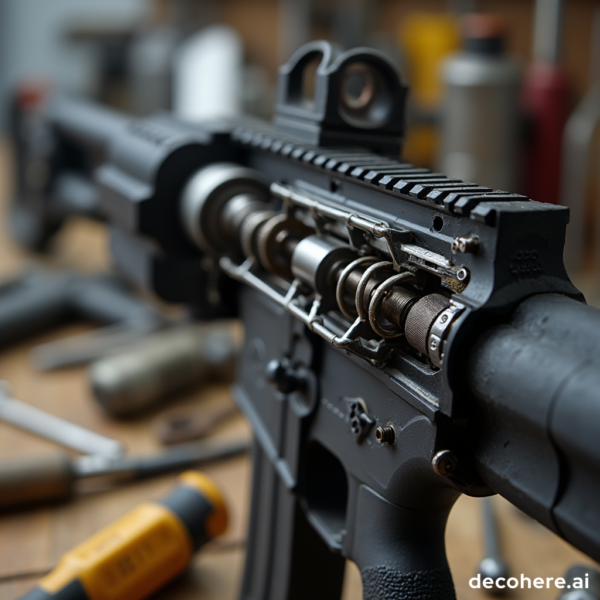Choosing the Best Automotive Wire Connectors: Expert Guidance, Brands, and Installation Tips
Introduction: Why Automotive Wire Connectors Matter
Automotive wire connectors are vital components that ensure reliable electrical connections in vehicles. A secure and high-quality connection prevents issues like power loss, short circuits, and corrosion, which can all lead to malfunctioning headlights, sensors, or even engine problems. Given the variety of environments vehicles operate in-heat, vibration, moisture-selecting the right wire connector is crucial for both safety and performance.
Understanding the Main Types of Automotive Wire Connectors
There are several types of wire connectors commonly used in automotive applications, each with specific advantages and ideal use cases. Understanding these types will equip you to choose the best option for your project or repair.
1. Butt Connectors
Butt connectors are among the most widely used for joining two wires in a straight line. They come in insulated and non-insulated versions, with heat-shrink insulation providing extra protection against moisture and corrosion. When installed properly using a ratcheting crimping tool, butt connectors create a strong, reliable connection that meets the demands of automotive environments. According to detailed connection testing, high-quality butt connectors with heat-shrink tubing consistently outperform many alternatives in terms of durability and electrical conductivity [3] .
2. Waterproof and Weatherproof Connectors
For areas exposed to rain, dirt, or under-hood heat, waterproof connectors are essential. These connectors often feature rubber seals and locking mechanisms that keep out moisture and dust. Notable examples include NAOEVO 16AWG 2 Wire Waterproof Connectors and 10 Kit 2 Pin Waterproof Wire Harness Connectors, both of which have received positive reviews for maintaining reliable connections in harsh conditions [1] . Deutsch connectors are particularly well-regarded for their robust weatherproof design and secure locking features, making them a top choice in the automotive industry [2] .
3. Solder Seal Connectors
Solder seal connectors combine soldering and heat-shrink insulation in a single package. When heated, the solder melts to join the wires, while the tubing shrinks to provide environmental protection. Recent tests have shown that solder sleeves can provide impressive performance, often surpassing expectations for both conductivity and weather resistance [3] .
4. T-Shape, Lever, and Quick Connectors
For quick installations or repairs, T-shape and lever-style connectors are available. These are designed for speed and convenience, making them ideal for temporary fixes or non-critical connections. However, they may not provide the same long-term durability as crimped or soldered connectors, especially in high-vibration or high-moisture environments [4] .
Top Brands and Their Advantages
When it comes to automotive wire connectors, brand reputation and product quality are key. The following brands have consistently received positive feedback from both professional installers and DIY enthusiasts:
- TE Connectivity : Known for reliable performance and fair pricing. Their connectors are widely used and trusted for their longevity and resistance to environmental stress [2] .
- Deutsch : Famous for strength and durability, Deutsch connectors handle harsh conditions well. Their weatherproofing and secure locks make them indispensable for critical automotive applications [2] .
- LEADSIGN : Recognized for robust construction and ability to withstand tough weather, though typically at a higher price point [2] .
Other reputable brands, such as JRready and HFM, are also noted for specialized applications or advanced connector technologies. When selecting a brand, consider your budget, the specific environment where the connector will be used, and any compatibility requirements.
How to Select the Right Connector for Your Project
Choosing the ideal automotive wire connector involves several key factors:
- Application Environment : For areas exposed to the elements or engine heat, opt for connectors with weatherproof or waterproof ratings. Verify the presence of seals or gaskets.
- Electrical Load and Wire Size : Ensure the connector supports the amperage and voltage of your application and matches the wire gauge (AWG) being used.
- Installation Method : Decide between crimping, soldering, or quick-connect solutions. Crimp connectors are ideal for most permanent joins, while solder sleeves may be preferable for high-vibration areas.
- Cost vs. Durability : While some connectors cost more upfront, their durability can reduce long-term maintenance and replacement expenses.
For critical automotive systems-such as engine sensors or safety features-invest in connectors from brands with proven reliability, even if they cost more initially.
Step-by-Step Installation Guidance
Proper installation is just as important as selecting the right connector. Follow these steps for a secure, long-lasting connection:
- Gather Materials : Select the correct connector for your wire gauge and application. Use a quality crimping or soldering tool as recommended by the connector manufacturer.
- Prepare the Wires : Strip the wire insulation to the appropriate length (typically 1/4″ to 3/8″). Take care not to nick or cut wire strands, as this can weaken the connection.
- Insert the Wires : Insert stripped wires fully into the connector barrel or sleeve. Ensure all strands are inside the connector.
- Crimp or Solder : For crimp connectors, use a ratcheting crimper for consistent pressure. For solder seal connectors, apply heat evenly until the solder melts and the tubing shrinks snugly.
- Inspect the Connection : Gently pull on the wires to verify a secure join. Double-check for exposed copper or incomplete insulation.
- Test Functionality : Before securing wires in place, test the connected circuit to confirm proper operation.
For more detailed tutorials, you can find instructional videos on platforms like YouTube by searching “automotive wire connector installation” or consulting the manufacturer’s official website for product-specific guidance.

Source: kingofkingslutheranchurchnnj.org
Common Pitfalls and How to Avoid Them
Many wiring failures can be traced to improper connector selection or installation. Here are common mistakes and how to prevent them:
- Using undersized or oversized connectors : Always match the connector size to the wire gauge for a tight fit.
- Poor crimp technique : Avoid generic crimpers. Use ratcheting tools for better consistency [3] .
- Ignoring environmental protection : For exterior or under-hood wiring, only use connectors with proper seals and weatherproof ratings.
- Skipping the test phase : Always confirm the connection’s integrity before final assembly.
Alternative Approaches and Advanced Options
For advanced applications or custom projects, consider:
- Open barrel splices : Used in OEM wiring harnesses for a streamlined, low-profile join. Requires specialized crimping tools.
- Fakra connectors : Essential for RF or high-frequency data transmission in modern vehicles [2] .
- Lever quick connectors : Useful for rapid prototyping or temporary circuits, though less robust for long-term use [4] .
Always refer to the vehicle manufacturer’s service manual or consult a professional for complex or high-stakes wiring tasks.
How to Access High-Quality Automotive Wire Connectors
You can purchase reputable automotive wire connectors from major online retailers, brick-and-mortar auto parts stores, or directly from manufacturer-authorized distributors. When buying online, ensure the seller is reputable and check recent customer reviews for product quality and authenticity. If you need detailed support, search for the manufacturer’s official website or product support line. For professional installation, seek out licensed automotive technicians or shops with electrical repair expertise.

Source: alamy.com
Summary and Key Takeaways
Choosing the best automotive wire connectors involves understanding your application’s needs, selecting high-quality brands like TE Connectivity or Deutsch, and following best practices for installation. By focusing on durability, weather resistance, and proper installation techniques, you can ensure reliable vehicle performance and reduce the risk of electrical issues.
References
- [1] YouTube (2024). Get Wired for Success: 7 Game-Changing Automotive Connectors.
- [2] FakraConnectors.com (2024). Best Automotive Wire Connector Brands Compared.
- [3] BestCarAudio.com (2023). Testing 15 Types of Electrical Connections.
- [4] YouTube (2025). Top 6 Car Electrical Wire Connectors: Features, Uses, and Best Picks!



